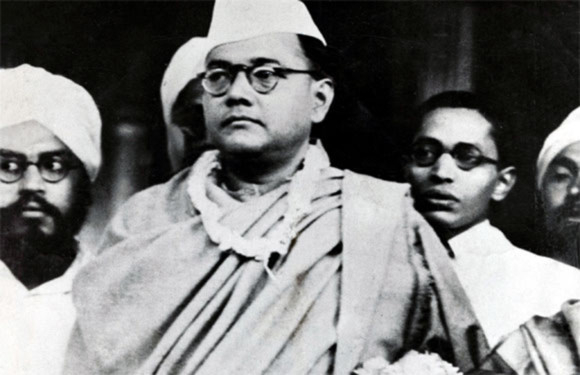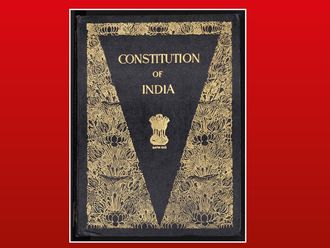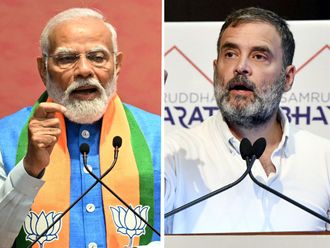
It has been 68 years since India won independence. And yet, when we talk about India’s freedom struggle, there is one character whose aura continues to grow with every passing day — even now! With Netaji Subhas Chandra Bose, the ‘point-counterpoint’, ‘hero-antihero’, ‘establishment-vs-fugitive’ brand of narrative — marking those tumultuous years just before the British were finally forced to weigh anchor from Indian shores in August 1947 — becomes all too fascinating.
Scarcely did we come across a persona, during the 200 years of the Queen’s rule over the Indian sub-continent, who created so much buzz, ignited such myriads of opinions and triggered such a plethora of ‘theories’ on his whereabouts as Bose did — and still continues to, even seven decades after that reported plane crash in Taihoku, Japan, on August 18, 1945, that supposedly killed him. As proof of Netaji’s ‘death’ remains inconclusive until today, periodic governments at the Centre — starting with Jawaharlal Nehru’s in 1947 and right up to Indira Gandhi’s in the late 1960s — have continued to feed suspicion of a perceived cover-up, thereby helping the flora and fauna of speculative theories to proliferate and even obfuscate what could and should have been a more dispassionate evaluation of the freedom fighter.
Netaji’s blueprint for an armed struggle to free India from the clutches of British rule ran directly opposed to the path of non-violence as advocated by Mahatma Gandhi. And this ideological dichotomy within the discourse of India’s freedom struggle has often resulted in an emotional logjam, preventing a more cerebral and academic assessment of Netaji.
It is an open secret that Gandhi and Netaji never saw eye-to-eye when it came to choosing the means to the end of achieving India’s independence. And while Gandhi was the ideological behemoth that Netaji often found himself at loggerheads with, politically, it was Nehru who found Netaji’s presence within the Congress party rather imposing. When Bose was re-elected as Congress president in 1939, the rift within the outfit became all the more apparent, with a working committee more compliant with the Gandhi-Nehru brand of politics stifling Bose’s authority. This eventually saw Bose launch a new platform within the Congress called All India Forward Bloc. It is widely believed that a charismatic leader like Bose could have posed a serious challenge to Nehru’s claim to the highest public office in India after independence. This narrative of Nehru representing the Gandhi-backed clique within the Congress and Bose going it alone with his call of an armed struggle fired up the ‘point-counterpoint’, ‘hero-antihero’, ‘establishment-vs-fugitive’ debate in India.
The moot point is, if a person who was supposed to have been killed in a plane crash in 1945 was believed by some people to be still alive until as late as 1985; if there are reams of secret files compiled by government sleuths that have not been declassified even after five decades of them being commissioned; and if the ‘death’ or ‘disappearance’ of one of India’s greatest freedom fighters remains shrouded in half-truths and doubts even after four inquiry commissions then these leave ample room for speculation to thrive and mystification to prosper.
Blinkered view
And the root cause for such a foggy version of the truth, that virtually transformed Netaji into the ‘X-Factor’ of India’s freedom struggle, was the Nehru-led dispensation that sought to evaluate Bose in terms of a studied suspicion and nervous apprehension over his mass appeal. An astute statesman that he was, it was at Nehru’s behest that the efficacy of the non-violent approach to India’s freedom struggle was ingrained in the minds of the populace as the gospel truth. And for generations, that version of the nation’s political history has been projected as the bedrock of India’s socio-political subsistence — making Netaji’s philosophy appear as ludicrous as the delusional worldview of Adolf Hitler.
This, in spite of the fact that the Indian National Army, led and inspired by Netaji, had rattled the British administration of the day as there were reports of mutiny within certain sections of the British-Indian armed forces and large-scale disappointment and frustration among the soldiers in view of their forcible drafting into the Allied forces during the Second World War.
If Nehru’s cultured opposition to Netaji served as an impediment towards acknowledging his real worth in India’s freedom struggle, then no less damaging is the blinkered view of a section of Indian society that has always sought to project Bose as the magic wand to cure all of the nation’s woes. Those obsessed with the Netaji brand of nationalistic fervour ought to remember that someone who had sought to join ranks with the likes of Hitler and Mussolini and who had no qualms about advocating that India should be put under military rule for at least 10 years after its independence, could have easily emerged as a serious threat to the nation’s democratic ethos. Seeing Netaji merely through the prism of nationalism, turning a blind eye to his dictatorial aspirations, would be little less than self-defeating.
Caught between a studied distrust and disdain on one hand and a jingoistic pitch on the other, evaluation of one of India’s greatest contributors to its freedom struggle often gets fuzzy. Therefore, it is time to not just declassify the secret files on Netaji but also to declutter our minds of prejudices. Putting a date, time and place to Netaji’s death — once and for all — could be a good way to start with.











